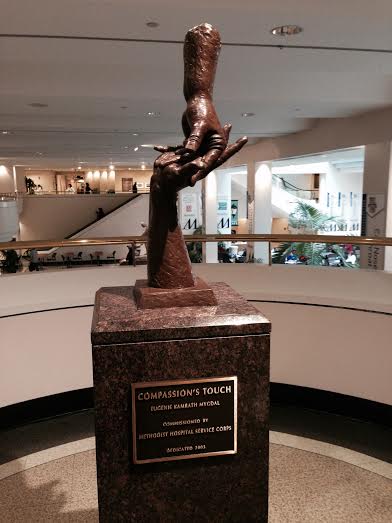Baby Jane - A Kangaroo Care Story
Sep 15, 2014
Picture yourself in the month of December. Around you, the smell of spruce trees in the air, lights are twinkling, and people bustle around you happily.
Now imagine, during this month of the year, you are inside a hospital ICU waiting room. When you're in that moment, waiting for the other pin to drop, it feels like everyone in the world is experiencing the joy of the holiday season... but not you.
As you learned recently, the woman in the hospital waiting room while others decked the halls around her, was me. I spent my weeks inside of the hospital at my Mother's bedside or inside that appropriately named purgatory, the waiting room. Waiting for her to take a turn for the better, or the worse. Just waiting.
In the waiting room of the hospital, everyone is involved with your private moments. So it's no surprise that all heads turned when the elevator door opened. One day a few weeks into this journey, the doors opened to reveal a woman, more noticeable than most, because she was pushing a stroller...
I see that no one comes to meet her as she pushes the stroller filled with car seat, diaper bag and other belongings forward. I realize that she still looks pregnant in the way that many women do when they are freshly postpartum. From the stroller the distinct cry of a young baby erupts. The woman doesn't try to quiet or comfort the baby, but stands continuing to look overwhelmed and lost.
The 'concierge' comes over and ushers the woman away to her destination, the Surgical ICU.
Soon after, I visit my Mother in her "pod". The Surgical ICU has sets of patients in a single area so that nurses can be constantly present for all of them. This means, of course, that this is another area without much privacy, at most a curtain to give you visual privacy.
As I sit with my Mom, I can't help but notice that the young woman and her baby are with a man inside of the same pod. The baby is being given a bottle inside the stroller, with the woman standing in between the stroller and the man's bed. The nurses are visibly frustrated with the woman and her setup.
I overhear them discussing the man's condition—he is stabilized but is suffering from organ failures and possible brain damage. Soon after, the nurses suggest it is time for the woman to leave. They explain that the pod isn't an area for the baby and stroller, and though she looks unhappy, the woman acquiesces and exits the area.
I venture back out to the waiting rooms. There I discover the woman again. The baby, still in the stroller, is quiet now and covered up. This quiet space is filled with people just killing time, waiting for news, and this woman is no different.
As she interacts with her baby, who has started to cry, there is no joy... no light... no normal motherly reaction. She appears to be in complete shock.
These ICU veterans are casting judgement on this Mother and her lack of reaction to the baby's fussing, or maybe on the fact that the baby is present at all.
I feel morally obligated to at least try, and also compelled forward with a different need—one where I can actually make an impact.
I stand up, and walk over. I touch her gently on the arm and hand her the always hidden box of tissues and say, “Do you need a hand? Maybe some water?” As the words leave my lips, she looks me in the eyes, comes to life, and begins to cry.
“Oh my goodness, thank you. Yes. I really need to use the restroom.”
We head off to the bathroom. There I learn the baby is a girl—Baby Jane—and the woman is her mother, Mama. Baby Jane is just 37 hours old...
As the days pass, I overhear the nurses give her a hard time about bringing Baby Jane into the unit. Mama stands up for herself. I realize why she shut down when I asked about her family: she has no support structure.
Eventually, we skip the choir and go to the cafeteria to observe Baby Jane together. I share what I’ve learned from the Brazelton Institute, and we start to piece together that Baby Jane doesn’t habituate well to light. Her Mama is stunned—and relieved.
I go to buy a babywearing shirt for her, hoping it’s the right choice. When I finally give it to her, I reassure her there’s no obligation. We go to the bathroom and try it on together.
She wears Baby Jane into the ICU. The nurse who once seemed frustrated now smiles: “That’s clever.” Others take notice. For the first time, there’s no judgment.
I know that this is a long story, but the conclusion is quite short.
Kangaroo care and babywearing didn’t change the outcome of what happened to this woman’s husband, but they did change the perspective of many people in the surgical ICU...





